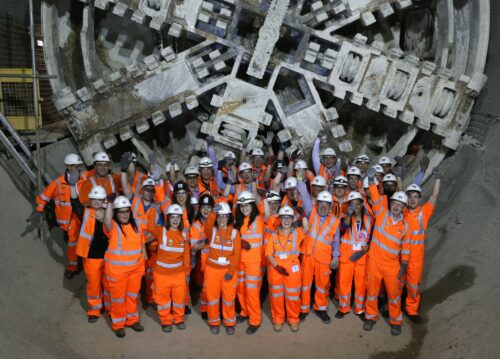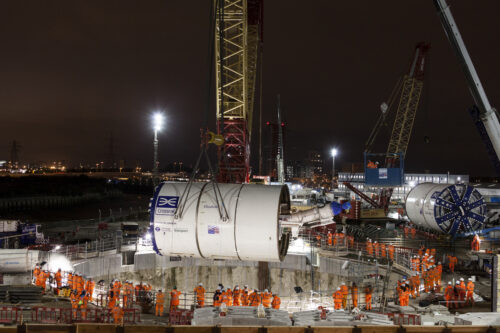Challenges
Known as “C305”, the project contract required the construction of 11.9km of twin bore tunnels. Known as the Eastern Running Tunnels, they routed from London’s Limmo Peninsula to Farringdon and Victoria Dock, and from Stepney Green to Pudding Mill Lane.
The contract included bored tunnels, sprayed concrete lined (SCL) tunnels, diaphragm wall shafts, segment manufacturing facility, spoil handling conveyor systems and more.
Berthing Facility
In addition to the substantial tunnel boring and other elements of the contract, the project also included the design and construction of a new 200m-long marine berthing facility at Instone Wharf, located on the River Lea where it enters the River Thames, to be capable of handling approximately two 85m-long vessels. The facility was used for exporting approximately 1 million m3 of excavated tunnel material via marine transportation.
Sustainability
Seven million tonnes of material were excavated during the construction of this project for Crossrail, 3.4 million of which were excavated by the eight tunnelling machines. Overall, 98% of all excavated material was re-used, minimising waste and carbon impact.
In a landmark partnership with the Royal Society for the Protection of Birds (RSPB), three million tonnes of this excavated material was used to create the Wallasea Island Wild Coast Project - a flagship wetland nature reserve twice the size of the City of London - at Wallasea Island in Essex.


